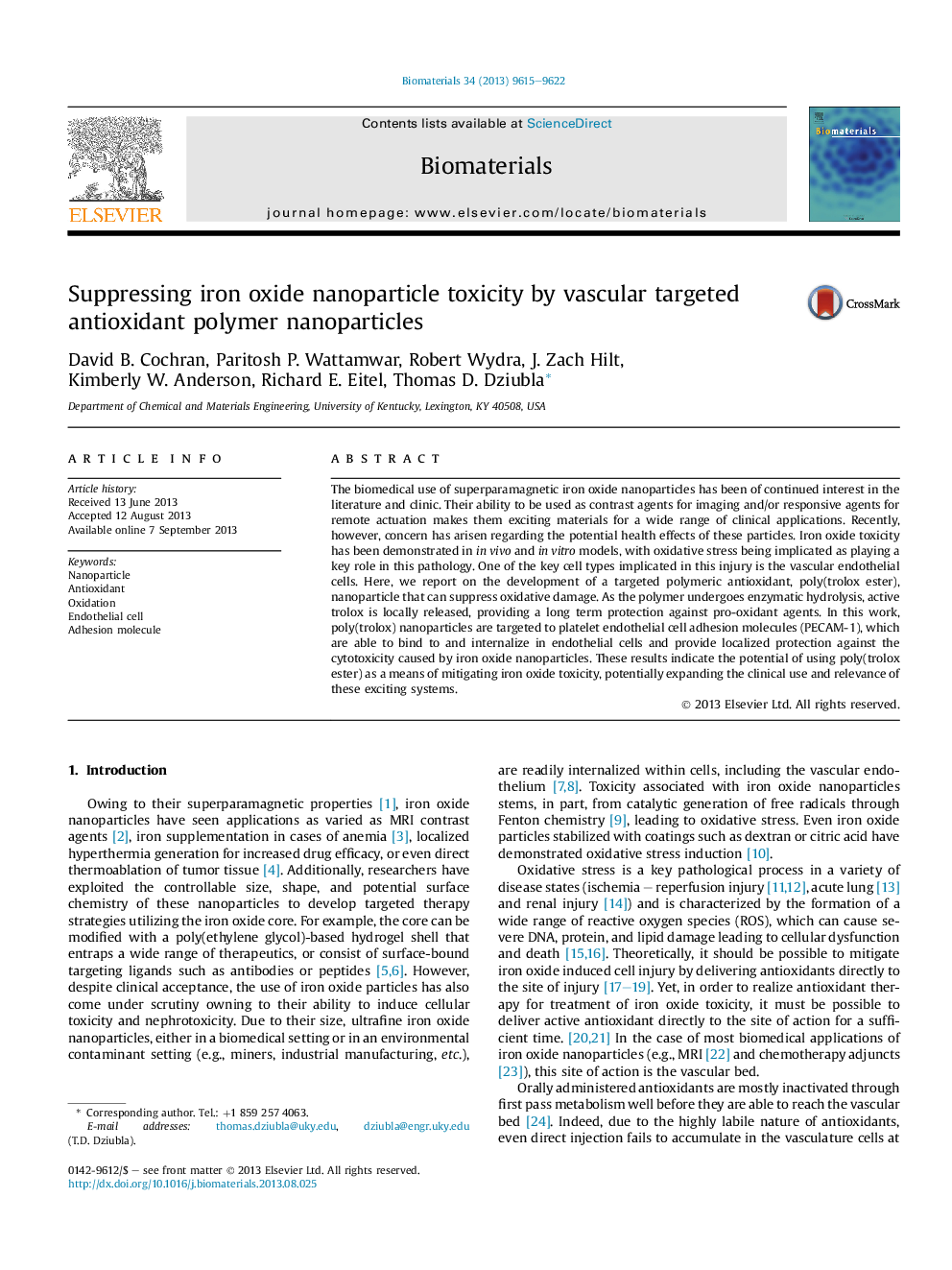| Article ID | Journal | Published Year | Pages | File Type |
|---|---|---|---|---|
| 6470 | Biomaterials | 2013 | 8 Pages |
The biomedical use of superparamagnetic iron oxide nanoparticles has been of continued interest in the literature and clinic. Their ability to be used as contrast agents for imaging and/or responsive agents for remote actuation makes them exciting materials for a wide range of clinical applications. Recently, however, concern has arisen regarding the potential health effects of these particles. Iron oxide toxicity has been demonstrated in in vivo and in vitro models, with oxidative stress being implicated as playing a key role in this pathology. One of the key cell types implicated in this injury is the vascular endothelial cells. Here, we report on the development of a targeted polymeric antioxidant, poly(trolox ester), nanoparticle that can suppress oxidative damage. As the polymer undergoes enzymatic hydrolysis, active trolox is locally released, providing a long term protection against pro-oxidant agents. In this work, poly(trolox) nanoparticles are targeted to platelet endothelial cell adhesion molecules (PECAM-1), which are able to bind to and internalize in endothelial cells and provide localized protection against the cytotoxicity caused by iron oxide nanoparticles. These results indicate the potential of using poly(trolox ester) as a means of mitigating iron oxide toxicity, potentially expanding the clinical use and relevance of these exciting systems.
